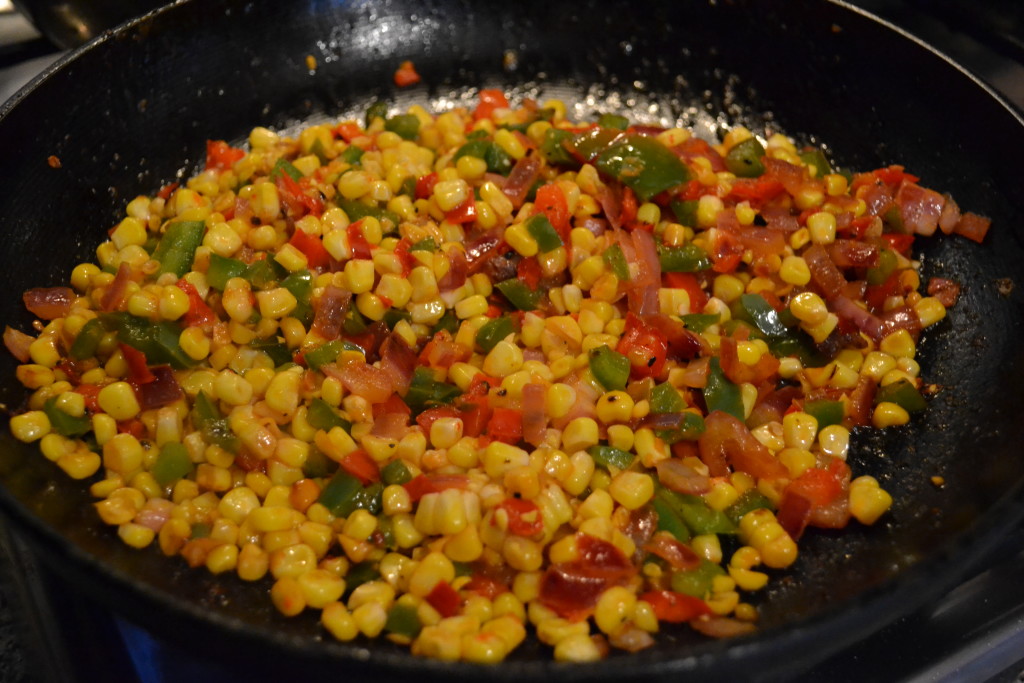On Sunday supplement
Food and Wine
You all know what corn is, right? Raise your hands if you do. Good, most of you anyway. Corn, or, more properly in most parts of the world, some variation on maize (the word derives from the native Taíno language where it is simply maiz, directly adopted into Spanish), is the most widely grown crop in the Americas, despite attempts to change that over to soy.
What you may not know is that it’s a hybrid plant. You go back a couple of thousand years and you find two entirely different plants that at some point either naturally or through human manipulation, were crossbred to produce some variety or another of maize. And there are some varieties – at least a couple of hundred different ones – there are more than a hundred just of what we think of as yellow (or white) sweet-corn. That doesn’t begin to get into the variations on colors that are available, the types with very large kernels common in the Andes, or the sorts used for making popcorn.
And, there are more recipes for what you can do with these golden ears of goodness than I’d care to count. On or off the cob, pureed, mashed, whole, boiled, steamed, fried, grilled, the list goes on and on. So I won’t.
Back when I was growing up in the 60s in the Midwest of the U.S. there was a sudden interest in “Mexican food”. We’re not talking about anything that anyone in Mexico would have recognized as Mexican cooking, but there was just this sudden appearance of dishes in all the ladies’ cooking and home magazines that included the just as suddenly available chili powders and other ingredients purported to make things… Mexican. Somewhere around that time the earliest versions of what came to be called Cal-Mex cooking, a sort of fusion of southern California ingredients and sensibilities with ideas and flavors supposed to be from Mexico. Some folks called it, early on, Mexicali instead, but that never really caught on, with the exception of one dish that took North American home economics kitchens by storm… Mexicali Corn.
As to just what the dish is, or was, seemed to vary with the magazine it was presented in. And with time, the ingredients have changed from those early years to much more elaborate, and, fresher ones. I’m pretty sure that when my mother prepared it (or, more likely, bought in lovely plastic bags of pre-mixed and frozen from either Birdseye or Green Giant), it contained corn, green and red bell pepper, maybe some onion, and a dash of the ever so exotic at the time, “chili powder”.
The thing is, the stuff is good. It’s really good. Especially if prepared right, with lovely fresh ingredients and spices. And that’s just what we’re going to do here. We tend to serve it alongside everything from grilled or sauteed chicken breasts to fish to whole, rice-stuffed calamari. Have fun with it!
Mexicali Corn
4 ears of fresh corn, still in the husk
1 red onion
1 red bell pepper
1 green bell pepper
3-4 cloves of garlic
2 jalapeños
1 teaspoon ground cumin
1 teaspoon ground coriander
1 small bunch of cilantro
2 limes
2 tablespoons of olive oil
salt and pepper
Once again we’re going to either fire up the grill or put a cast iron skillet on the stove top over high heat. Keeping the corn in the husk allows us to grill them until the kernels soften and lightly color, while the husk burns a bit but protects the corn itself. If your corn is already peeled you can cook it the same way, just turn it more often to prevent it from burning. Once you’ve grilled them well on all sides, remove them from the heat, let them cool, strip off the husk, and cut the kernels off the ears. The easiest way to do that is cut the ears in half across, stand the now flat cut surface on your cutting board, and use a good sharp knife to cut down along the cob in four or five cuts, top to bottom.
Chop the onions, peppers, garlic and cilantro. In a frying pan heat up the olive oil. Saute the onions, garlic, peppers and spices with a little salt and pepper until soft. Add the corn that you’ve cut off the cobs. Cook for 2-3 minutes just to blend the flavors. Off the heat, finish by tossing with the chopped cilantro and the grated zest of the two limes. Adjust the seasoning to your tastes with salt and pepper.
A series of recipes and articles that I started writing for the Buenos Aires Herald Sunday supplement, Food & Wine section, at the beginning of 2012. My original proposal to them was to take local favorite dishes and classics and lighten them up for modern day sensibilities. We’re not talking spa or diet recipes, but at the very least, making them healthier in content, particularly salt, fat and portion size. As time went by, that morphed into a recipe column that, while emphasizing food that is relatively “good for you”, wasn’t necessarily focused on local cuisine. At the beginning of 2013 I decided to stop writing for them over some administrative issues, but it was fun while it lasted.
